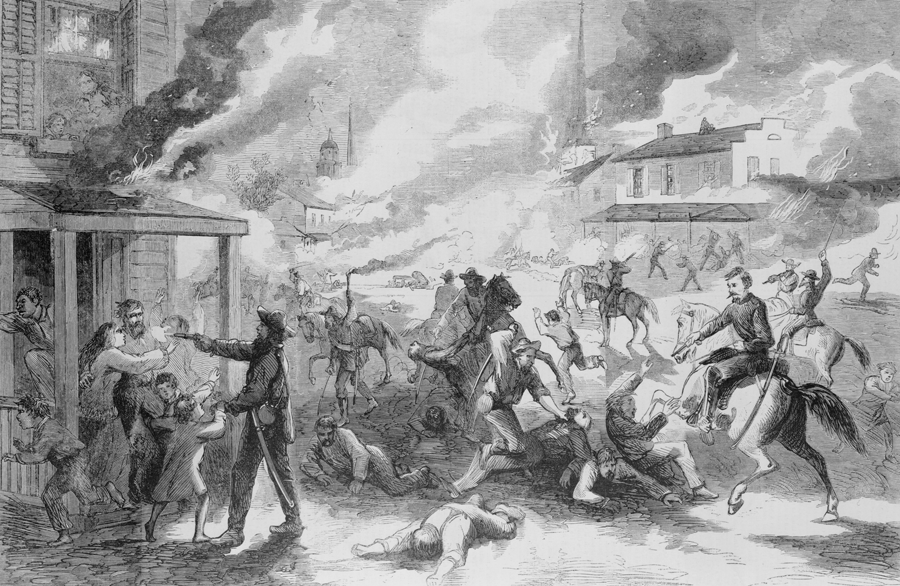On Friday, August 21, 1863, the Lawrence Massacre, also known as Quantrill’s Raid, took place. It was a battle between the Free Staters of Lawrence and the supporters of slavery living in Missouri. The result of this bloody confrontation was the death of about 190 unarmed men and boys including a number of African Americans. Quantrill’s men also burned 185 buildings. Only one of Quantrill’s raiders was killed.
The motivation for the attack was the destruction of the city in retaliation for Osceola. This was a reference to the Union attack on Osceola, Missouri, in September 1861, led by Sen. James H. Lane. Osceola was sacked and nine men were court-martialed and executed. It is also believed that the collapse of the Kansas City women’s prison was an additional motive for some to join Quantrill’s guerrilla units. At least 10 women or girls, all under the age of 20 and some of whom were related to the guerrillas, such as William T. “Bloody Bill” Anderson’s sisters, were incarcerated in the building when it collapsed on August 13, 1863. There is also speculation that the city of Lawrence was hit because it had long been an area of abolitionist activity and a refuge for runaway slaves.
A group of 400 to 450 led by William Quantrill attacked the town, looting houses, pillaging stores, shooting civilians, and burning buildings along Massachusetts Street, the town’s main thoroughfare. Their first target was the Eldridge House, a large brick hotel in the heart of Lawrence.
African Americans were particularly targeted, including Black Union soldiers. The George Ellis family of free black farmers just outside of Lawrence were attacked. Ellis’ father was one of the first people to die in the raid. Quantrill’s men set fire to the Ellis farmhouse but George escaped and hid in a thicket near the Kansas River while his mother, Jane, dragged his brother out of the house and they concealed themselves under a bed in a nearby structure.
The other main targets were white abolitionists, many of whom were on a “death list” drawn up by Quantrill and others before the raid. The list included U.S. Sen. Lane, Kansas Gov. Charles Robinson, and the Rev. Hugh Dunn Fisher, chaplain of the 5th Kansas Cavalry, all of whom escaped. Lawrence Mayor George Collamore hid in his well where he died from smoke inhalation but the rest of his family survived, including his severely wounded 18-year-old son. By the end of Quantrill’s Raid, 20% of the town’s male population had been killed, leaving 85 widows.
Undeniably, Quantrill’s Raid was one of the most violent actions against civilians during the Civil War and had drastic consequences. In order to control these guerrillas and prevent further carnage, Union Gen. Thomas Ewing issued Order No. 11 on August 25, 1863, directing that all residents of four counties on the Missouri side of the border (Jackson, Cass, Bates, and northern Vernon counties) be relocated to the Kansas City area. He strongly believed that this measure would incite the guerrillas and limit their ability to obtain supplies from friends and relatives who lived in those counties.


